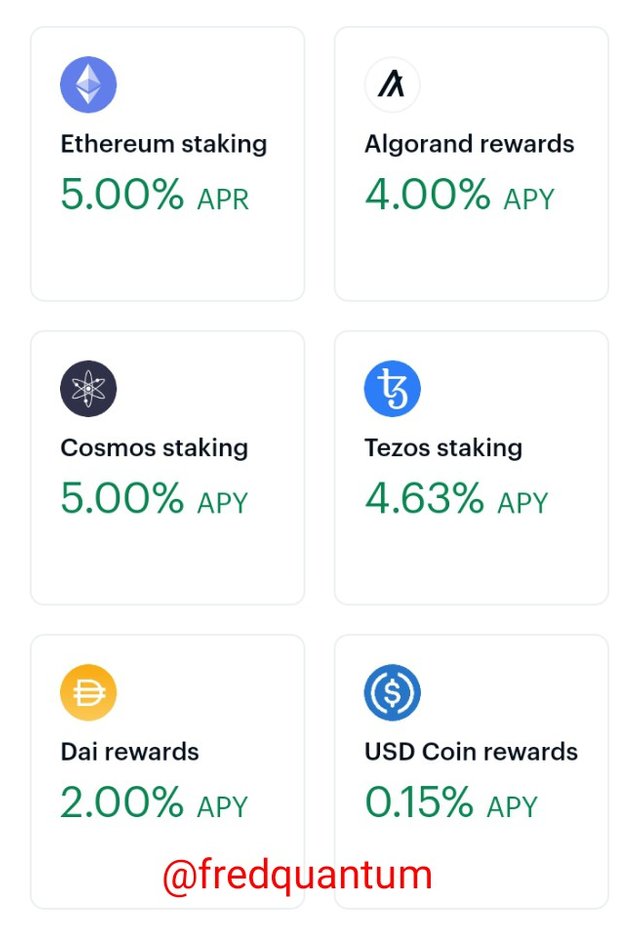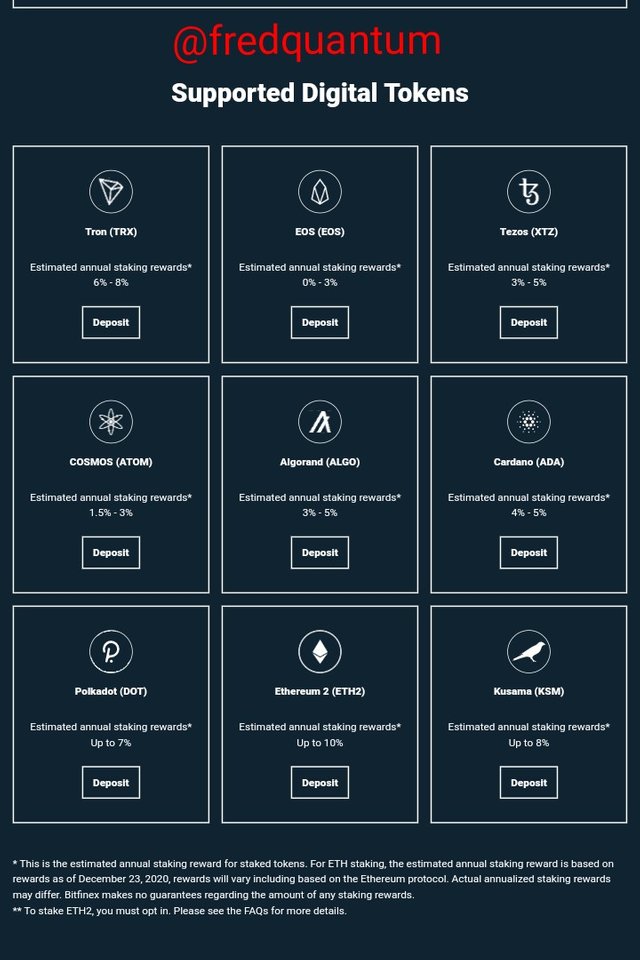Crypto Academy / Season 3 / Week 1 - Homework Post for @imagen | Staking
Introduction
The new week has been in a swift motion and I am happy I've attended a few lectures earlier. I proceeded to attend another lecture presented by professor @imagen where the professor discussed the topic Staking. I will be attending to the task given by the professor in this article. Be my guest!
What is Staking?
It's important to discuss the concept of staking before heading to the task in detail. Staking in the crypto ecosystem is the process of locking up one's digital asset up for a certain period to earn rewards in annual percentage rate as per the condition of the assets in the staking platform. Staking can also be likened to savings with flexible and fixed options.
Assets staked by individual users qualify them as validators on the network and in addition, the stake is used for securing and continuing the network operation. In return for assets staked, users earn rewards from the newly minted assets in which they have staked in and the rewards is based on the annual return rewards on the staking condition/rate of the asset as given by the platform offering the service.
Both decentralized exchanges (DEX) and centralized exchanges (CEX) offer staking services on their platforms with varying annual percentage rate as the case may be. For this task, I will be exploring staking on centralized exchanges. Now to the task.
1. Research and choose 2 platforms where you can do Staking, explain them, compare them and indicate which one is more profitable according to your opinion. (Binance is not allowed)
For this purpose, I will be exploring staking on the duo of Coinbase and Bitfinex exchanges. Both would be discussed in the subheadings below. Let's go into it.
Coinbase Exchange
Coinbase exchange is a cryptocurrency exchange that opens platform for users to trade their crypto assets. Coinbase came into the limelight in the year 2012, a company that is US-based, regulated, and licensed in the US. In addition to its services, Coinbase has a decentralized exchange as well that enables users to take advantage of the decentralized world. Recently, Coinbase revealed their interest in going into the German market and that'd be a great boost for the exchange.
Staking of assets on Coinbase Exchange
Staking is not an exception of the services offered by Coinbase exchange, during the process of exploration of the Coinbase exchange, I realised Coinbase has 6 crypto assets available for staking and the assets are; Ethereum (ETH), Algorand (ALGO), Cosmos (ATOM), Tezos (XTZ), DAI (DAI) and USD Coin (USDC). Aforementioned assets under staking on Coinbase comes with varying APY & APR, and we would take a look at that below.
Staking rate on Coinbase Exchange
As highlighted earlier, staking on the crypto assets on Coinbase comes with different APY (Annual percentage yield) and the list is; ETH (5% APR), ALGO (4% APY), ATOM (5% APY), XTZ (4.63% APY), and the stable coins DAI (2% APY) and USDC (0.15% APY). See the screenshots below for the assets available for staking in Coinbase exchange.

Screenshot from coinbase.com/staking/
From the staking APY of each assets listed above, it is evident that ETH and ATOM has the highest APR & APY of 5% respectively. Let's move to the next exchange.
Bitfinex Exchange
Bitfinex exchange came into the limelight in the year 2012 just like the counterpart (Coinbase) discussed earlier, but it is Hong Kong-based company. Bitfinex exchange is yet another cryptocurrency exchange that offers digital assets trading and its services extend to offering Margin trading, Margin lending and OTC (Over-the-Counter) amongst other services. Research shows that Bitfinex kick-started business as a P2P lending platform for Bitcoin before they added other crypto-assets and services.
Staking of assets on Bitfinex Exchange
In addition to the list of cryptocurrency trading, Margin trading, Margin lending, OTC (Over-the-Counter) and more services offered by the Bitfinex exchange, there is also an inclusion of staking whereby users can earn passive income when users can lock in their assets to earn an annual staking rate on the staked assets.
Exploring the Bitfinex exchange shows that there are 9 different assets available for staking on the platform where we have; TRX, EOS, XTZ, ATOM, ALGO, ADA, DOT, ETH2 and KSM crypto assets available for staking such that users can earn passive income from their assets without sitting idle in the wallets. The assets mentioned above have different annual percentage rates and that would be discussed in the next section.
Staking rate on Bitfinex Exchange
Having noted earlier that we have 9 crypto assets available for staking on Bitfinex exchange with varying annual staking rate, I will be giving the details of each of the assets as follows; TRX (6 - 8%), EOS (0 - 3%), XTZ - (3 - 5%), ATOM (1.5 - 3%), ALGO (3 - 5%), ADA (4 - 5%), DOT (up to 7%), ETH2 (up to 10%) and KSM (up to 8%). Take a look on the screenshot below to see the clearer picture of the details.

Screenshot from staking.bitfinex.com/
It is evident from the details given about the crypto assets available for staking on Bitfinex that ETH2 has the highest annual staking rate which is up to 10%. Users with enough capacity can choose any of the assets above to stake on thereby earning passive income on their assets.
Drawing comparison between Coinbase and Bitfinex Exchanges
I will give a list of the similarities and differences noted on the staking platform of Coinbase exchange and Bitfinex exchange to see how one is profitable than the other, and at the same time compare the availability of assets for staking on both. Let's see the list below.
| Assets | Coinbase (Staking rate) | Bitfinex (Staking rate) |
|---|---|---|
| ETH/ETH2 | 5% (ETH) | Up to 10% (ETH2) |
| ALGO | 4% | 3 - 5% |
| ATOM | 5% | 1.5 - 3% |
| XTZ | 4.63% | 3 - 5% |
My final note on this, If I am considering exploring more numbers of crypto assets to stake into then I will choose Bitfinex exchange over Coinbase exchange.

2. What is Impermanent Loss?
Literally as the name sounds, Impermanent loss refers to temporary loss which are recovered over time. In detail, the impermanent loss is seen in the decentralized finance world where users can use their crypto assets to provide liquidity in the liquidity pool to earn passive income, as price volatility affects the asset provided in the liquidity pool, such that the variation in the price of the assets in the pool and the worth when it was deposited is referred to as Impermanent loss.
Digging further, the price variation in assets locked in the liquidity pool which was caused by price volatility characteristics of the cryptocurrency gives rise to impermanent loss which means the loss would be recovered when the asset appreciates again in value and we can say it is a temporary loss because it will be recovered.
Impermanent loss is a great concept to get familiarized with it especially when you are taking a step of entering the DeFi world as seen in the case of liquidity providing. You become a liquidity provider to earn passive income from exchanges fees while your assets in the pool are utilized by the AMM (Automated Market Maker) to quote prices and provide liquidity for transactions. Having said that, the difference between the price when you provided liquidity and what you have (smaller) at a certain point in time amounts to impermanent loss.
For instance, If I provided liquidity into the TRX-USDT pool in JustSwap and at that point it was 50 USD then in the next day due to price volatility of crypto, I have the asset in the liquidity pool to be 45 USD, that's exactly impermanent loss because it's temporal and would be recovered over time.
Points to ponder

3. What is Delegated Proof of Stake (DPoS)?
Before talking about Delegated Proof of Stake, it is important to bring ourselves back to the concept of consensus mechanism in blockchain technology, which means the consensus algorithm employed by a certain crypto network to verify transactions on the blockchain, secure the network and earn block rewards for the miners in return. As such, a consensus is reached before verifying a transaction on a network in blockchain technology.
Delegated Proof of Stake consensus mechanism is an invention of Daniel Larimer which came into the limelight in the year 2014 and it's the variation of Proof of Stake consensus mechanism but with slight differences. In the case of Proof of Stake, any user can earn from block rewards and it would be according to the stake of their assets, in contrary to this, Delegated Proof of Stake uses what is known as Delegates/witnesses to validate transactions and secure the network. The numbers of delegates range from 21 - 100 and they are voted to enter the region as required by a network that uses Delegated Proof of Stake consensus algorithm. The Steem blockchain for example has 20 + 1 witnesses that validate transactions and secure the network.
The voting of delegates/witnesses comes from other stakeholders on the network and the voting power of the stakeholders as determined by the volume of their assets staked, elects the new set of witnesses as voted by the stakeholders. In short words, the more the stake held the more the power to vote for delegates and this can be considered as a system that gives priority to the rich. Examples of crypto that uses the Delegated Proof of Stake consensus algorithm are; TRX, STEEM, EOS, ADA, and many more.
In addition, unlike the Proof of Stake and Proof of Work, delegates/witnesses on a Delegated Proof of Stake collaborates to build new blocks and not compete for it. At the same time, delegates are often reorganized to vote in new delegates to enter the valid zone, and delegates that publish wrong transactions can be voted out by the stakeholders, that is the power of Delegated Proof of Stake.
Delegated Proof of Stake as compared to the Proof of Stake and Proof of Work

Conclusion
In conclusion, staking in the crypto ecosystem has enabled users to earn passive income on their assets locked for a period and the rewards are based on annual percentage rate which is more beneficial than keeping assets idle in the wallet. Both DEX and CEX offer this service but for this context, I have discussed the exchanges (CEXs) part by using Coinbase and Bitfinex exchanges for the purpose.
Speaking of impermanent loss, it is the price variation between the price of an asset after it was supplied into the liquidity pool as compared to its worth before providing liquidity and as such, it's a temporary loss. And Delegated Proof of Stake utilizes delegates/witnesses to validate transactions and secure the network with the witnesses earning block rewards in return, this consensus mechanism is highly scalable, fast, and efficient. Thanks to professor @imagen for this great lecture. Thank you, all.



Cc: @imagen

Written by;
@fredquantum
Hi @fredquantum. Thank you for participating in Season 3 of the Steemit Crypto Academy.
I congratulate you, you did a great job and demonstrate a complete understanding of the topics requested in the assignment.
I look forward to continue correcting your next assignments.
Grade: 10.0
Thank you for the review, professor @imagen. It's my pleasure to participate in this lecture. Thank you once again.
😁